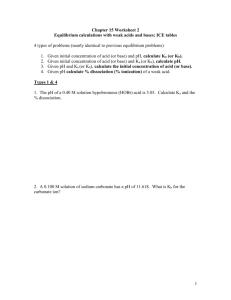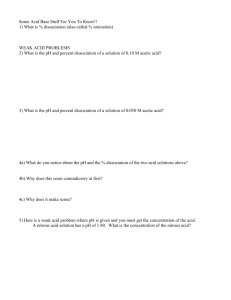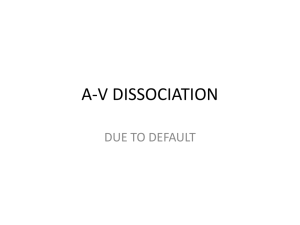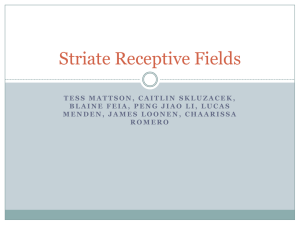presentation source
advertisement
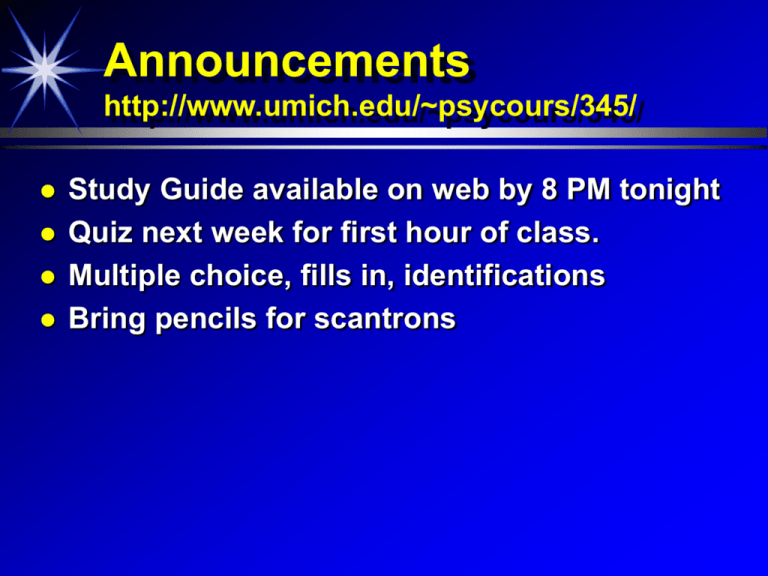
Announcements http://www.umich.edu/~psycours/345/ Study Guide available on web by 8 PM tonight Quiz next week for first hour of class. Multiple choice, fills in, identifications Bring pencils for scantrons Last Lecture Projections maps and the homuculi Organization of the Visual System Qu ickTime™ an d a Ph oto - JPEG de com pre ssor are nee ded to s ee th is p icture. This Lecture Organization of the Visual System continued Blindsight what it is; how it ‘s studied; what it tells us about human visual information processing. What/Where pathways Their discovery, their neural origins, their manifestations in humans Sensitive areas are “magnified” Field of View Qu ickTim e™ an d a oto - JPE G de com pres s or nee ded to s e e th is pic ture . Cortical Map of Visual Field Receptive Field: the region of the sensory surface that makes a cell fire. Cortical Magnification • Each neuron in area 17 has a retinal receptive field • More neurons have foveal receptive fields Pathway from Eye to Brain Geniculo-Striate pathway Optic nerve carries signals from retina. Decussation at optic chiasm (optic tract) Synapse at LGN of thalamus Optic radiations to occipital lobe AREA 17; Striate Cortex QuickTime™ and a Photo - JPEG decompressor are needed to see this picture. LVF input to RH The connections RVF input to LH Left Eye Nasal hemiretina- LVFprojects to right hemisphere Temporal hemiretina- RVFprojects to left hemisphere Right Eye Nasal hemiretina- RVFprojects to left hemisphere Temporal hemiretina- LVFprojects to right hemisphere nasal To cross at optic chiasm uncrossed uncrossed Vision requires cortex… or does it? LORE of neurology until the early 70's... LGN Striate extra Striate Reports of residual vision in animals with striate lesions: Recovery after experimental field defects spared light/dark discrimination spared localization abilities Implication: Other structures (tectum) can compensate for striate function. Re-Evaluate vision in human scotomas: Poppel, Held & Frost (1973). Residual visual function after brain wounds involving the central visual pathways in man. Nature. Task: light flashed in scotoma Patient looks at (saccades) to flash location NOTE: Patient protests: “How can I look at something I can't see?" Experimenter: GUESS! Results: Saccadic endpoint related to target location Text notes case D.B. (Weiskrantz) Saccade loc 40 30 20 10 0 5 10 20 30 TARGET LOC. Why Does Blind Sight Occur? One theory (non-striate hypothesis): Due to non geniculo-striate pathways Retinotectal pathway --> direct route for saccadic eye movement control. Tecto-pulvinar-extrastriate --> indirect route for manual and guessing responses. LGN Retinotectal pathway Striate Pulvinar S.C. tectopulvinar pathway extra Striate Alternative to Nonstriate Hypothesis: Cortical (Striate) Islands Fendrich, et al. (1992). detailed perimetry, retinal stabilization revealed islands of vision in scotoma Implications: Spared tissue in Area 17 can explain residual vision. Colliculus may not mediate all blindsight WHY is consciousness lacking? Two possibilities Non striate theory: primitive SC circuitry SC is inadequate for "awareness". Cortex necessary for awareness Both theories: The weak visual signal is below threshold for consciousness. non-striate theory- SC only gets weak retinal input. Cortical Islands- tissue fragments are insufficient for consciousness-NOTE: cortex does not equal consciousness. Lessons from Blindsight Implicit vs Explicit (conscious) Knowledge. Parallel operations Yield products (representations) for different behaviors Human residual visual is “nonfunctional” compared to animals. humans "residual" capacities seen only with experimental methods. nonhuman species may depend more on tectum Encephalization of visual (WHAT & WHERE) function in primates and humans. Announcements http://www.umich.edu/~psycours/345/ Study Guide available on web by 8 PM tonight Quiz next week for first hour of class. Multiple choice, fills in, identifications Bring pencils for scantrons The What and Where Pathways The Ungerleider & Mishkin (1982) Experiment Task 1: Object discrimination Task 2: Landmark discrimination study an object select the familiar object* (reward) • select foodwell closest to the TOWER temporal lesions impair OBJECT TASK parietal lesions impair LANDMARK TASK Conclusion: VENTRAL stream processes identity information DORSAL stream processes spatial information Logical basis for this inference: 1) Focal parietal lesion --> selective deficit, dissociation: “where” impaired, “what” intact 2) Focal temporal lesion --> selective deficit, dissociation: “what” impaired, “where” intact DOUBLE DISSOCIATION Inadequacy of a single dissociation Consider the following hypothetical outcome: Parietal & Temporal lesions impair the landmark task, but neither impaired the object task What does this result mean? A) both brain areas contribute to spatial processing? B) the tasks differ in difficulty? Double Dissociation: Experimental strategy 2 brain areas (X,Y) 2 different tests (T1,T2). Result Lesion of X impairs T1 not T2 Lesion of Y impairs T2 not T1 DOUBLE DISSOCIATION TASK PERCENT CORRECT 1 2 Locus X Locus Y BRAIN REGION Double Dissociation Logic Applied PERCENT CORRECT TASK 1 2 Locus X Locus Y What/Where DISSOCIATION PERCENT CORRECT DOUBLE DISSOCIATION TASK Object Spatial Temporal Parietal Why do these separate pathways exist? Different functions: NEED special purpose machinery. have different computational demands. require different types of information. How does the input to these pathways differ? RETURN to the Retina: 1. photoreceptors (rods and cones) perform transduction 2. Signals sent to RETINAL GANGLION CELLS (RG). 3. Convergence: many photoreceptors --> one RG cell M and P Retinal Ganglion Cells RG Cells are not just light detectors. Cells classified by what "turns them on" receptive field properties of cells M cells a) project to Magnocellular layers of LGN b) dominant in DORSAL/WHERE stream c) also go to SC d) fast conducting, colorblind, low acuity P cells a) project to Parvocellular layers of LGN b) dominant in VENTRAL/WHAT stream c) slow, color selective, high acuity M cells --> Magnocellular pathway P cells --> Parvocellular pathway Their output remains segregated in V1 & beyond Cytochrome oxidase stain reveals subregions in V1 A Schematic of What vs. Where What vs. Where in Humans Focal lesions produce selective color or motion blindness. cortical color blindness (achromatopsia) motion blindness (akinetopsia) Positron Emission Tomography (PET) studies in Humans reveal: Motion Area distinct from color area (e.g. Zeki and colleagues, 1990.) Artwork pre and post achromatopsia Achromatopsia Inability to perceive color-- color knowledge and color naming can be intact. acquired after cortical brain damage distinct from congenital color blindness (photoreceptor abnormality) Subjective reports... Lesion locus: bilateral occipito-temporal lesions associated w/upper visual field deficits. Akinetopsia Acquired inability to motion Subjective reports... Lesion locus: bilateral occipito-parietal involving area MT/V5. PET Activation Study Logic • Perceptual/cognitive activity mediated by localized neural activity. • Blood flow changes accompany regional changes in neural activity. • Blood flow changes measured by monitoring distribution of radioactive tracer. Regions active in response to COLOR Regions active in response to MOTION
